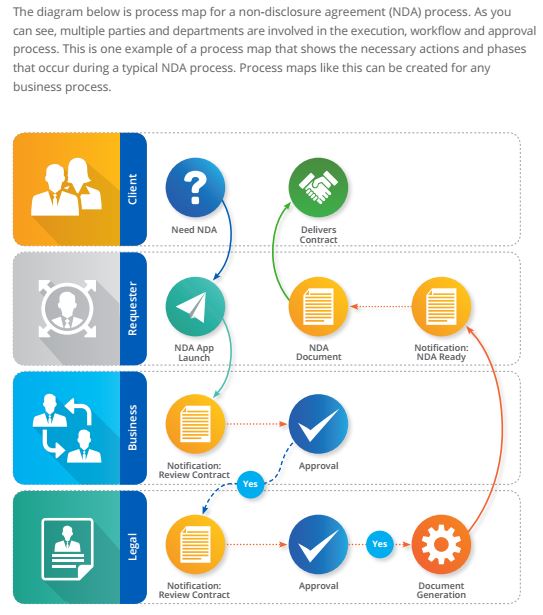1. The landscape for in-house legal departments has fundamentally changed. General Counsel (GCs) must think outside of his/her department when it comes to managing the entire enterprise’s legal affairs. This shift has meant that visibility into risk and compliance issues handled across the company, and metrics around spending and productivity are essential to a GCs success. Enterprise Legal Management is a term that has evolved to define this greater need for aggregated information across disparate departments in order to make better company decisions.
2. Enterprise Legal Management is a class of technology that helps GCs navigate this new landscape. The aim of ELM technology is to organize and inform through data. This class of technology makes it easier for GCs to gain visibility into potential legal risk across the wider organization, moving away from the siloed approach of yesterday. This enables a more proactive approach to managing the enterprise’s legal affairs and mitigating risk wherever it exists.
3. Enterprise Apps are the nimble cousin of your existing Enterprise Legal Management system. While larger ELM systems can give you easier access to global data, these systems don’t necessarily address the collaboration required to harness and use that data to benefit the organization. Built from the ground-up, Enterprise Apps are simple-to-configure, and easy-to-deploy solutions that aim to address complex and everyday processes that require a high degree of collaboration between knowledge workers.
4. Enterprise Apps can integrate with existing ELM systems. Although these Apps can replace larger systems of record, they are more often than not, a way to bridge the gap that exists in those larger systems. Do you have a gap in functionality in an existing enterprise system that requires collaborative workflow? An Enterprise App can be used to bridge that gap at a fraction of the cost, rather than having to reconfigure your existing system.
5. Companies of any size can benefit from Enterprise Apps. In-house legal departments dealing with organizations of any size, from small businesses to multi-billion dollar global corporations, can benefit from Enterprise Apps.
6. Enterprise Apps are a quick way to drive meaningful operational improvements. Unlike the development and implementation process for a large enterprise legal management system, which can take several months or years, the average time it takes our clients to implement an Onit App is 19 days. While the most complex implementations can take up to 90 days, this still beats the average for ELM systems by months.
7. Enterprise Apps can help your legal department transform the way it works. In one example, Onit partnered with a large Fortune 500 client to deploy an NDA App. The company’s in-house legal department dealt with over 10,000 NDAs annually, with the average time from start to finish taking over 16 days. Onit developed a prototype App to handle global submission, negotiation and electronic signature of NDAs. The result? The company processed over 1000 NDAs in the first month of deployment, with the completion time reduced to just 24 hours and 90% of the NDAs being processed without lawyer involvement.
8. Enterprise Apps are secure. Like your larger Enterprise Legal Management system, your Enterprise App data is hosted in secure commercial data centers. In most cases, your data is more secure than if you hosted it in your environment.
9. Enterprise Apps require little or no IT involvement. In many cases, customers can configure, deploy, and support enterprise Apps with no corporate IT involvement. App developers, such as Onit, achieve a “low code” or no code development structure, which also speeds up the time to value for our clients.
10. There is an Enterprise App for every need/process/workflow. Apps for very standard processes like contract review and approval, NDAs, alternative fee arrangements, and matter or legal spend management are available.. Alternatively, Apps can be created from scratch to meet a particular process or set of circumstances unique to your business.
When you are exploring enterprise legal management systems, it helps to have a technology partner who can walk you through the process of creating an effective solution that works for your department. Onit can help you determine your best course of action, and we’ll be there every step of the development process.
With a small investment of your time – typically 60 to 90 minutes – to help us understand your business process, we can configure an App. Contact us today!


